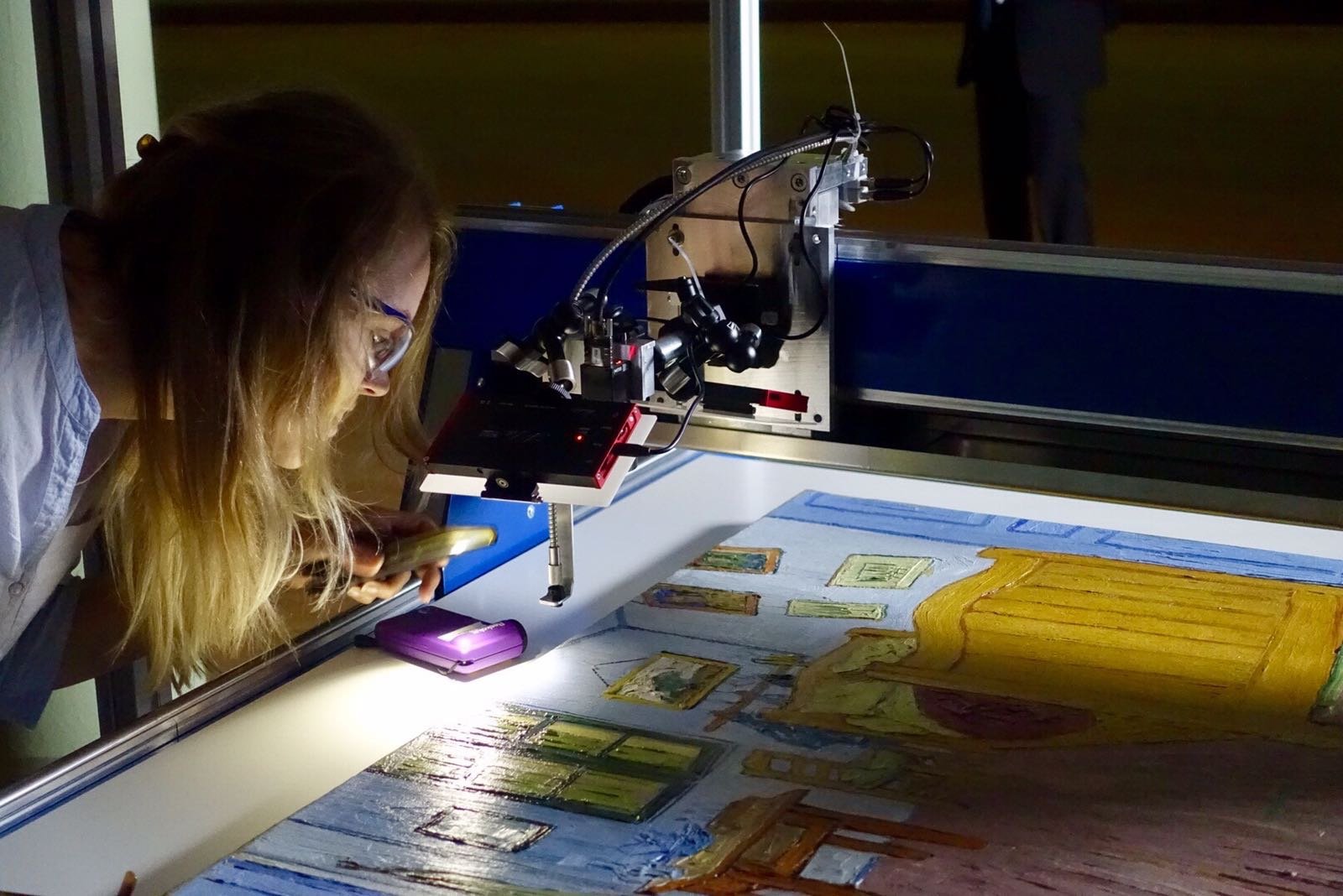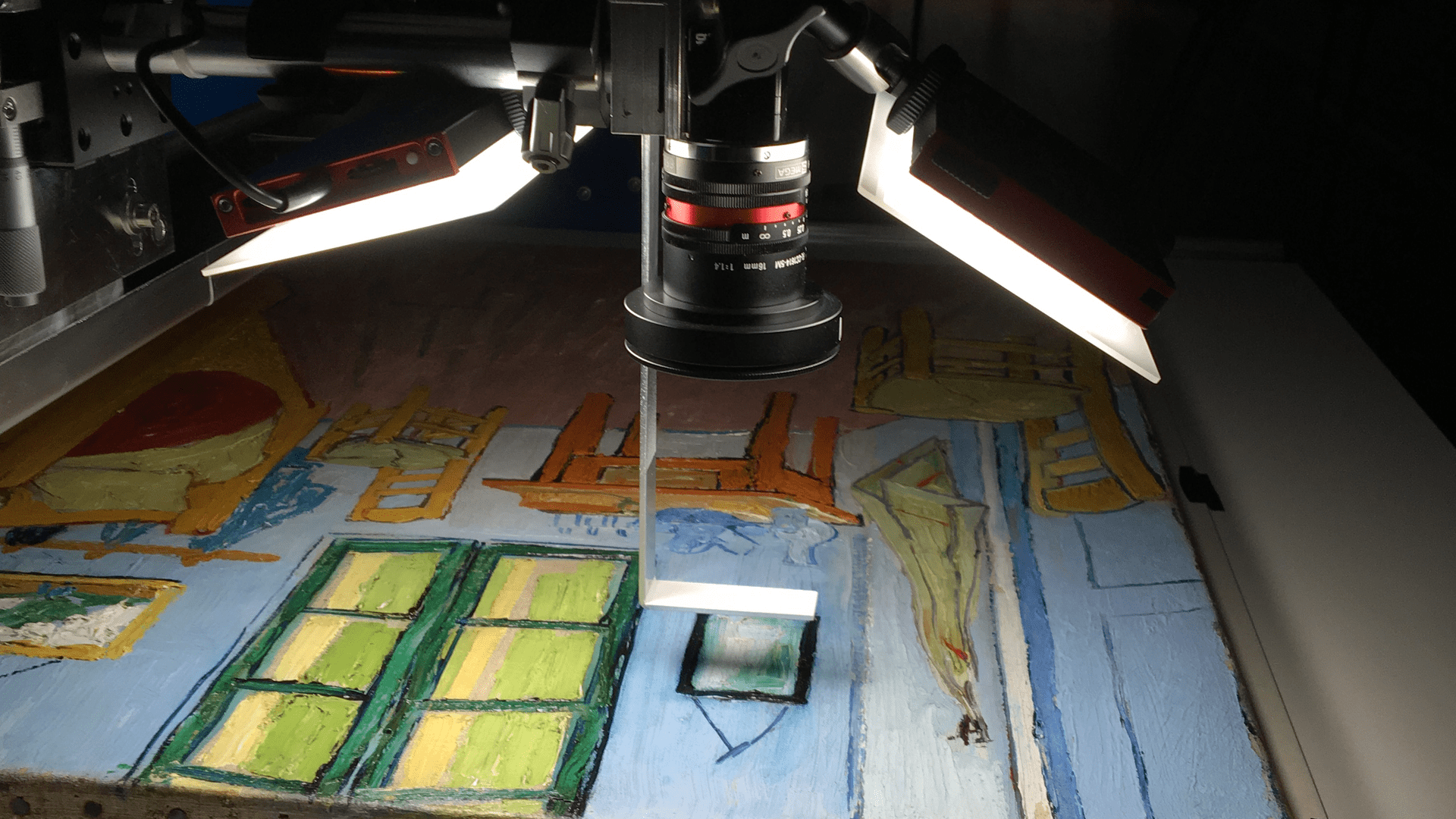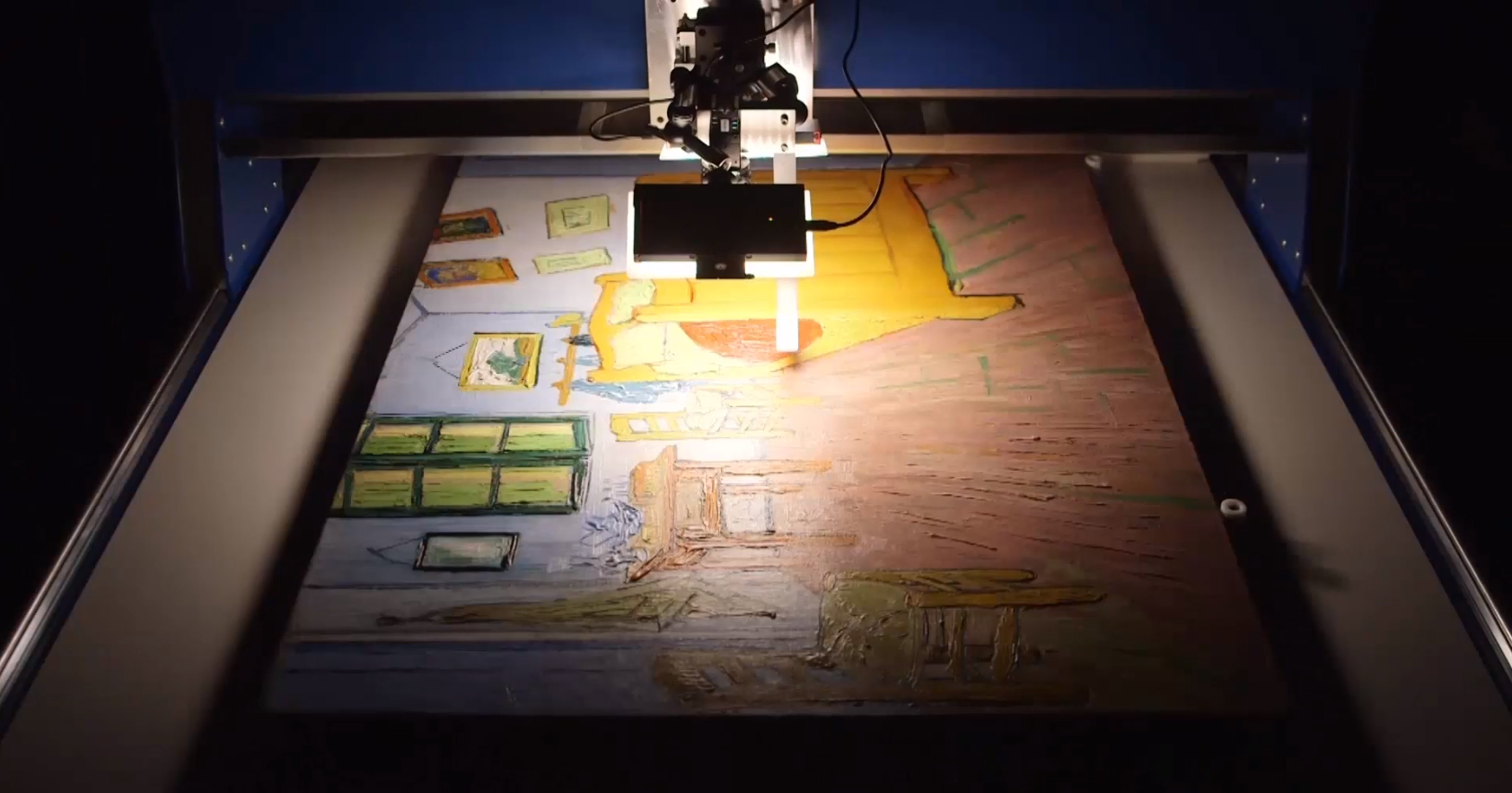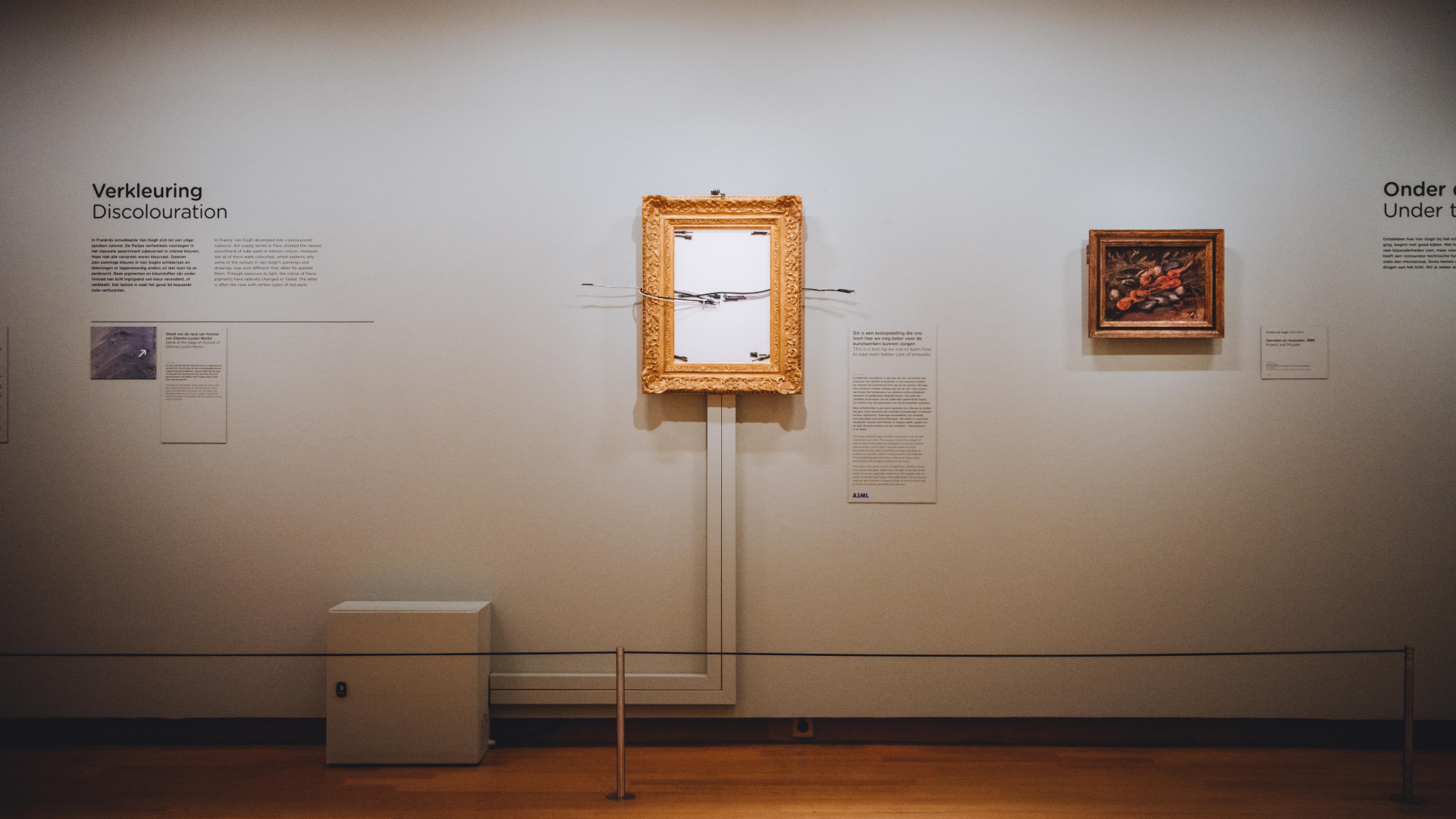7-minute read - by Sue Todd, January 28, 2021
Vincent van Gogh continues to inspire millions of people all over the world thanks to his revolutionary use of light and color. With our shared links to the Dutch province of Brabant and Van Gogh’s clear focus on light and innovation, ASML has always had an affinity with Vincent’s work and we are now using our expertise to help Van Gogh Brabant and the Van Gogh Museum protect his heritage.
Light is a powerful tool. While ASML’s chipmaking machines harness light to power the world’s electronics industry, Vincent van Gogh was more than aware of its adverse effects, causing paintings to “fade like flowers,” according to a letter to his brother and benefactor, Theo van Gogh, in 1889.
Yet, without light, we cannot appreciate Van Gogh’s genius, as Kees van den Meiracker, head of collection management and restoration at the Van Gogh Museum, explained: “Due to his vivid use of color and layering of paint, Van Gogh’s works can be very sensitive to light and specific pigments susceptible to color fading and their paints cracking. But we cannot reduce our light levels in the museums any further or people will not be able to truly appreciate Van Gogh’s work.”
This light trade-off puts art conservators in a difficult position. The right balance between the preservation and display of these important works of art must be found, according to Maria Barkelid, the Van Gogh project lead at ASML. “We want to monitor these paintings to understand the mechanisms behind detrimental physical and chemical changes they undergo, trying to slow these effects down while making them as available as possible to inspire the next generation.”
In partnership with the Van Gogh Museum, the Cultural Heritage Agency of the Netherlands (RCE) and the University of Amsterdam, ASML is striving to develop two state-of-the-art tools to measure and monitor the health of Van Gogh’s paintings and the causes behind color fading, paint cracking, and other significant environmental effects.
“Thanks to ASML’s innovative approach and level of expertise, we have the opportunity to achieve the speed and accuracy such tools demand,” explained Alessa Gambardella, research scientist and project lead at the Van Gogh Museum. “Working together, we also hope to ensure the long-term use of these instruments, where the hardware, software, and resultant data can be used in the years to come to continue to monitor these works of art and protect them for future generations.”
Precision matters when monitoring the masters
The first proposed tool is a portable measurement system, that can be placed in front of a displayed painting, reducing the amount of handling required. This measurement tool will contain a range of components, including mechatronics components that accurately move an instrument head around the painting, and the software to connect and control these systems.
The instrument head will contain the optics, mechanics and sensors to gather the required information – whatever that may be.

“We are trying to understand what parameter is indicative of changes in the paint, and this is a more complicated question than we first envisaged,” Barkelid explained.
Van Gogh used paint composed of pigments mixed with oil which is susceptible to both fading from light exposure and cracking, as its integrity breaks down.
“Every paint changes in different ways, responding individually to light, temperature and other environmental conditions. The challenge here is to find the generic parameters to monitor.”
Precision is vital to take the right measurements and accurately monitor this deterioration. The tool must take into consideration the height variations due to the thick layers of paint Van Gogh applied (known as impasto), the vibrations present during the measurements, and any glazing on the painting, for example, while also expediting the measurement process to a matter of hours.
“This is where ASML’s expertise comes to the forefront, our lithography machines rely on exact positioning to create intricate and multi-layered patterns on increasingly miniaturized microchips,” Barkelid explained. “However, while ASML has mastered alignment in our machines, the time scales we are dealing with here to monitor these works of art are different. Now, we may need to evaluate a tiny section of a painting a year apart, for example, with exact precision to ensure we are locating the same spot, regardless of any changes or movements the painting has experienced during that time – and that’s an exciting challenge.”
The second tool under development is a sensor, which will be placed on individual paintings and will monitor different environmental effects, potentially temperature, humidity, light exposure, air composition and/or vibrations. This opens up further opportunities for art conservators, allowing them to monitor more closely the effect of local environments on individual paintings.
Putting information to good use for all artworks
This pair of monitoring and measurement tools will gather a wealth of information for the Van Gogh Museum. However, today’s manual data processing techniques are not suitable for analyzing this volume of data. So, ASML is also developing an intuitive analysis dashboard to help museum users utilize this information with ease and begin to visualize both the previous and predicted changes to the paintings.
The implications for museums will be “important for our cultural heritage,” according to Van den Meiracker, who explained: “We don’t have sensors on every painting at the moment. When we do, using this information, we can understand aspects such as how the vibrations from a person walking in the museum affects a painting, for example. We can understand whether temperature, light or humidity is a more important aspect when understanding a painting’s deterioration. Bringing all this information together, we can strive to create an optimal condition for each individual painting in our museum.”
The next step is to create a digital representation of each painting using data science and machine learning techniques, to not only visualize the effects of aging on a painting but also try to predict how it will look 100 years from now.
ASML is working across multiple conservational and educational areas during this five-year partnership with the Van Gogh Museum. This work includes the launch of an educational program called 'Masterminds & Masterpieces' to encourage young people to connect with art and science and discover how innovation drove Vincent van Gogh to experiment with paint, color and light.
Van den Meiracker believes that this partnership will open the door to further innovations in areas we may have not yet considered. “Thanks to this unique collaboration with ASML, we will have access to all this information and state-of-the-art equipment and, I believe, this will extend our understanding to preserve the world’s art beyond the scope of this project. This is something new – and that’s exciting.”
Find out more about our Van Gogh partnerships.

Latest update: ASML researchers have installed a ‘dummy’ frame at the Van Gogh Museum. Read the story here.





